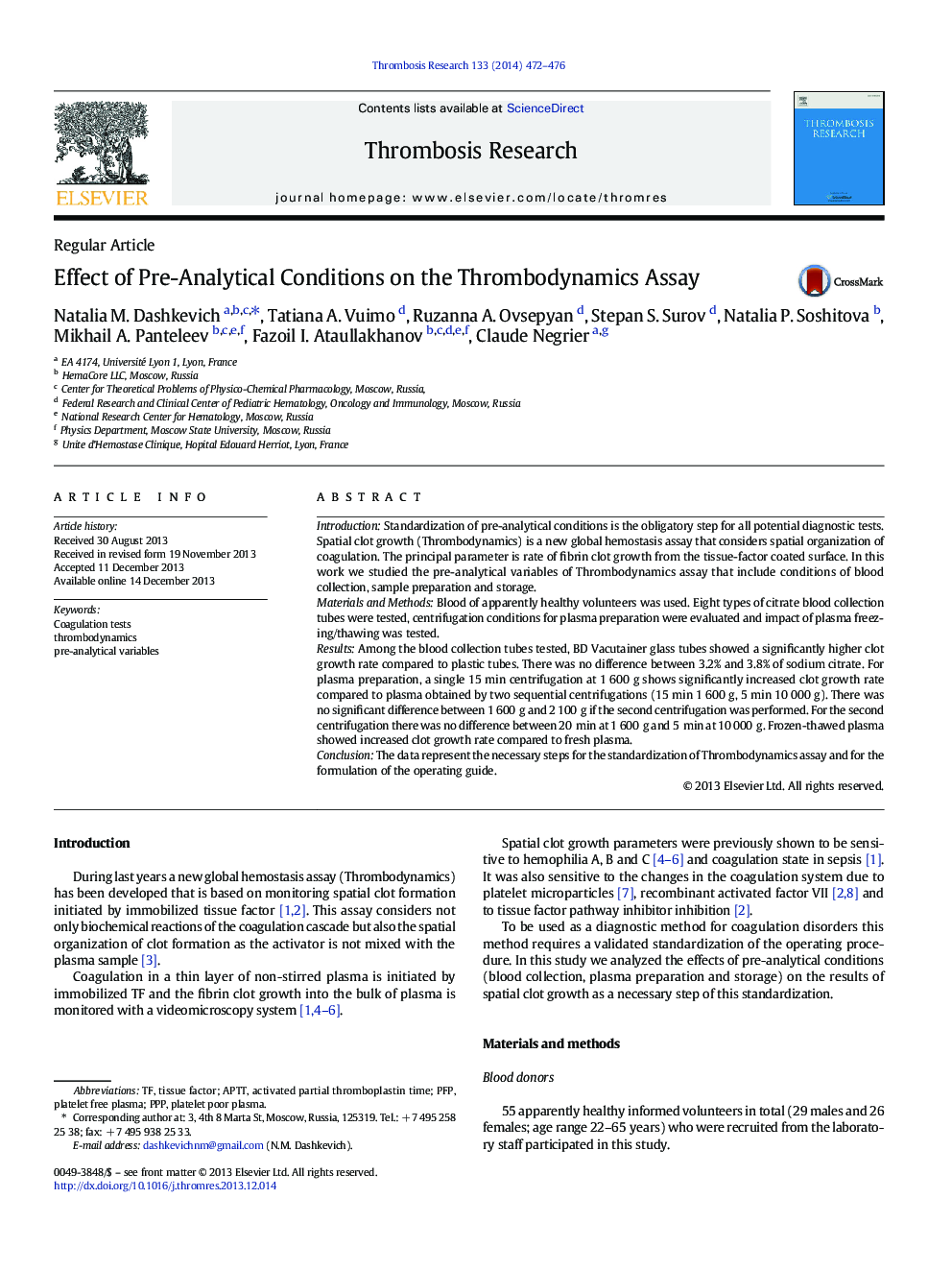| Article ID | Journal | Published Year | Pages | File Type |
|---|---|---|---|---|
| 6002442 | Thrombosis Research | 2014 | 5 Pages |
IntroductionStandardization of pre-analytical conditions is the obligatory step for all potential diagnostic tests. Spatial clot growth (Thrombodynamics) is a new global hemostasis assay that considers spatial organization of coagulation. The principal parameter is rate of fibrin clot growth from the tissue-factor coated surface. In this work we studied the pre-analytical variables of Thrombodynamics assay that include conditions of blood collection, sample preparation and storage.Materials and MethodsBlood of apparently healthy volunteers was used. Eight types of citrate blood collection tubes were tested, centrifugation conditions for plasma preparation were evaluated and impact of plasma freezing/thawing was tested.ResultsAmong the blood collection tubes tested, BD Vacutainer glass tubes showed a significantly higher clot growth rate compared to plastic tubes. There was no difference between 3.2% and 3.8% of sodium citrate. For plasma preparation, a single 15Â min centrifugation at 1 600Â g shows significantly increased clot growth rate compared to plasma obtained by two sequential centrifugations (15Â min 1 600Â g, 5Â min 10 000Â g). There was no significant difference between 1 600Â g and 2 100Â g if the second centrifugation was performed. For the second centrifugation there was no difference between 20Â min at 1 600Â g and 5Â min at 10 000Â g. Frozen-thawed plasma showed increased clot growth rate compared to fresh plasma.ConclusionThe data represent the necessary steps for the standardization of Thrombodynamics assay and for the formulation of the operating guide.
